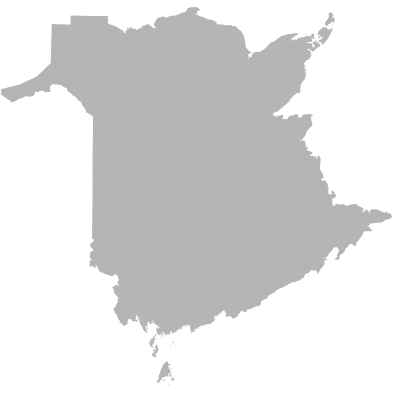Table

Province
New Brunswick
|
|
||||||||||||||||||||||||||||||||||||||||||||||||
|---|---|---|---|---|---|---|---|---|---|---|---|---|---|---|---|---|---|---|---|---|---|---|---|---|---|---|---|---|---|---|---|---|---|---|---|---|---|---|---|---|---|---|---|---|---|---|---|---|---|
|
|
|||||||||||||||||||||||||||||||||||||||||||||||||
| Context | |||||||||||||||||||||||||||||||||||||||||||||||||
| Percentage of eligible public schools that participated at the provincial level % | 2024-2025 |
98
|
||||||||||||||||||||||||||||||||||||||||||||||||
| Number of students who participated Number | 2024-2025 |
46,438
|
||||||||||||||||||||||||||||||||||||||||||||||||
| Percentage of students who participated % | 2024-2025 |
78
|
||||||||||||||||||||||||||||||||||||||||||||||||
| Language most spoken at home | |||||||||||||||||||||||||||||||||||||||||||||||||
| English % | 2024-2025 |
65.1
64.7 - 65.4
|
||||||||||||||||||||||||||||||||||||||||||||||||
| French % | 2024-2025 |
16.2
15.9 - 16.4
|
||||||||||||||||||||||||||||||||||||||||||||||||
| English and French % | 2024-2025 |
8.8
8.6 - 9.0
|
||||||||||||||||||||||||||||||||||||||||||||||||
| Indigenous language % | 2024-2025 |
0.3
0.3 - 0.4
|
||||||||||||||||||||||||||||||||||||||||||||||||
| Another language or combination % | 2024-2025 |
9.6
9.4 - 9.9
|
||||||||||||||||||||||||||||||||||||||||||||||||
| Sex at birth
Sex at birth refers to sex assigned at birth. It is typically assigned based on a person's reproductive system and other physical characteristics.
|
|||||||||||||||||||||||||||||||||||||||||||||||||
| Male % | 2024-2025 |
49.6
49.2 - 50.0
|
||||||||||||||||||||||||||||||||||||||||||||||||
| Female % | 2024-2025 |
50.4
50.0 - 50.8
|
||||||||||||||||||||||||||||||||||||||||||||||||
| Gender identity
Gender identity refers to the gender that a person feels internally and individually.
|
|||||||||||||||||||||||||||||||||||||||||||||||||
| Male % | 2024-2025 |
49.9
49.5 - 50.3
|
||||||||||||||||||||||||||||||||||||||||||||||||
| Female % | 2024-2025 |
48.6
48.2 - 49.0
|
||||||||||||||||||||||||||||||||||||||||||||||||
| Non-binary % | 2024-2025 |
1.5
1.4 - 1.6
|
||||||||||||||||||||||||||||||||||||||||||||||||
| Population groups
People with different backgrounds may have different experiences in their daily lives. This may include the way they are treated. The following are goups with which students identify.
|
|||||||||||||||||||||||||||||||||||||||||||||||||
| Self-identifies as Indigenous % | 2024-2025 |
8.6
8.4 - 8.8
|
||||||||||||||||||||||||||||||||||||||||||||||||
| Self-identifies as 2SLGBTQIA+ % | 2024-2025 |
11.9
11.7 - 12.2
|
||||||||||||||||||||||||||||||||||||||||||||||||
| Self-identifies as immigrant, newcomer or refugee % | 2024-2025 |
15.8
15.5 - 16.1
|
||||||||||||||||||||||||||||||||||||||||||||||||
| Newcomer, 2 years or less % | 2024-2025 |
47.6
46.6 - 48.7
|
||||||||||||||||||||||||||||||||||||||||||||||||
| Recent immigrant, 5 years or less % | 2024-2025 |
67.9
66.9 - 68.9
|
||||||||||||||||||||||||||||||||||||||||||||||||
| Self-identifies as a person with a disability or special need % | 2024-2025 |
8.4
8.2 - 8.7
|
||||||||||||||||||||||||||||||||||||||||||||||||
| Identifies with racialized groups % | 2024-2025 |
19.3
19.0 - 19.6
|
||||||||||||||||||||||||||||||||||||||||||||||||
| Food poverty
Food poverty refers to youth who report often or always going to school or to bed hungry because there is not enough food at home.
|
|||||||||||||||||||||||||||||||||||||||||||||||||
| Experiencing food poverty % | 2024-2025 |
5.4
5.2 - 5.6
|
||||||||||||||||||||||||||||||||||||||||||||||||
About this Table
Content and description
This table presents data collected from students in grades 6 to 12 through the New Brunswick Student Wellness and Education Survey (SWES). It contains self-reported information regarding the demographic context of New Brunswick students in grades 6 to 12. Topics include language, sex, gender identity, 2SLGBTQIA+ status, Indigenous identity, racialized groups, food poverty, as well as context around survey participation.
The questionnaire comprises modules, which means that certain questions are asked every other cycle.
Why it is important
Only when we understand who our students are and where they are coming from can we support their health and educational needs.
Availability of the data
The information in this data table is available by school district, school sector and overall New Brunswick, as well as by the seven (7) New Brunswick health zones and 33 communities created by the NBHC. More information is available on our New Brunswick Student Wellness and Education Survey page.
Note about 2021-2022 data
The methodology of the 2021-2022 edition of the SWS was significantly changed. This was the first cycle to adopt online data collection, and a shorter data collection period. Also, the survey questionnaire was thoroughly revised for this cycle. Many questions were removed or amended. As such, some indicators are no longer comparable to previous years, and caution needs to be exercised when attempting to compare the results of the survey with results from prior survey cycles outside of what is displayed in this Data Table.
The 2021-2022 edition of the SWS was conducted during the COVID-19 pandemic. Some schools may have had lower participation from their students than previous years. Some students may have participated to the survey during periods of remote learning.
Note about demographic groups:
In 2023, the NBHC undertook a review of the demographic questions in its surveys to more accurately report on the experience of citizens who identify with particular groups. As such, starting in 2024, all demographic groups (characteristics) have been adjusted to reflect this change. Data tables and indicator pages were adjusted to allow for trending where applicable.
